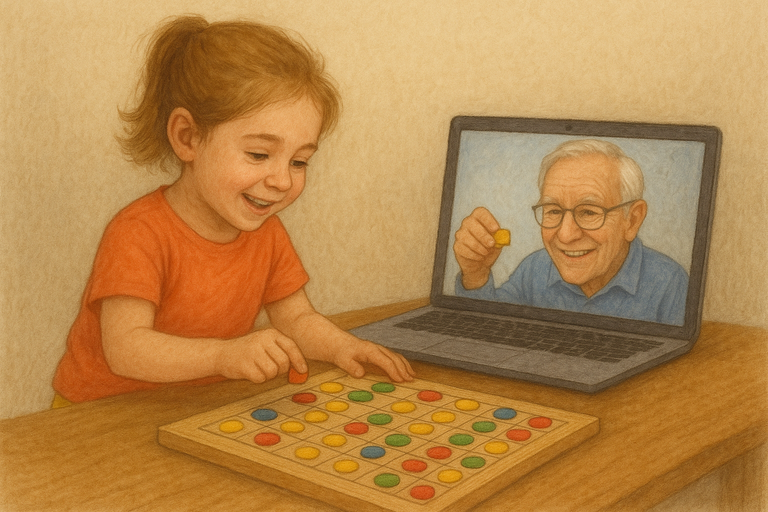
About the Project
This research project explores how tangible technologies can help build stronger connections between geographically separated families—especially between young children and their older relatives. By addressing the challenges of distance, isolation, and disconnection, we aim to support meaningful and playful interactions across generations.
Our Aims
We are working to:
-
Understand how families currently use technology to stay connected across distance, and how children and older relatives engage with each other.
-
Identify barriers and enablers that affect emotional closeness and meaningful interactions between young children and older adults.
-
Co-design with families to develop new ways for distant children and older relatives to connect through tangible technologies.
-
Prototype and build tangible systems that allow natural, hands-on interactions even when families are apart.
-
Test these systems with families over time to see what works best for fostering emotional closeness and engagement.
-
Develop a framework and practical tools to guide designers, developers, families, and communities in creating their own affordable, accessible systems for intergenerational connection.
Project Design Overview
This four-year research project is organised into five phases, each building toward a deeper understanding and practical solutions for supporting distanced intergenerational interaction.
Phase 1: Understanding Families
In Phase 1, we will conduct online interviews with parents and/or older adults. We aim to learn about families’ daily routines, values, interests, and how they currently stay connected across distance. We will explore how tangible objects – such as toys, props, and everyday items – support intergenerational communication, and examine how current technologies help or hinder emotional closeness.
Phase 2: Co-Designing Solutions
Informed by Phase 1 insights, we will host co-design workshops with families at the Queensland University of Technology (QUT) Kelvin Grove campus (and/or hybrid formats). Participants will collaborate with us to generate ideas for tangible, playful ways to connect across distance. As part of these workshops, participants will be invited to bring along personal items or objects from home that are meaningful to their intergenerational relationships. These items will help spark conversation and inspire design ideas during the sessions.
Phase 3: Prototyping and Testing
We will design and build two types of prototypes: tangible technologies or technology-enhanced toys and mixed-reality systems. These prototypes will be iteratively refined based on insights from the co-design workshops.
Phase 4: Longitudinal Evaluation
Families will trial the prototypes in their homes over a three-month period, allowing us to evaluate how these technologies support emotional closeness and engagement between distant children and older relatives.
Phase 5: Sharing Outcomes
Finally, we will develop resources tailored to different audiences:
-
Theoretical frameworks and academic publications for researchers
-
Design guidelines and toolkits for designers of toys and interactive systems
-
Practical resources such as cards, apps, websites, or instructions for social workers, practitioners, and families to create and implement their own tangible systems for intergenerational play